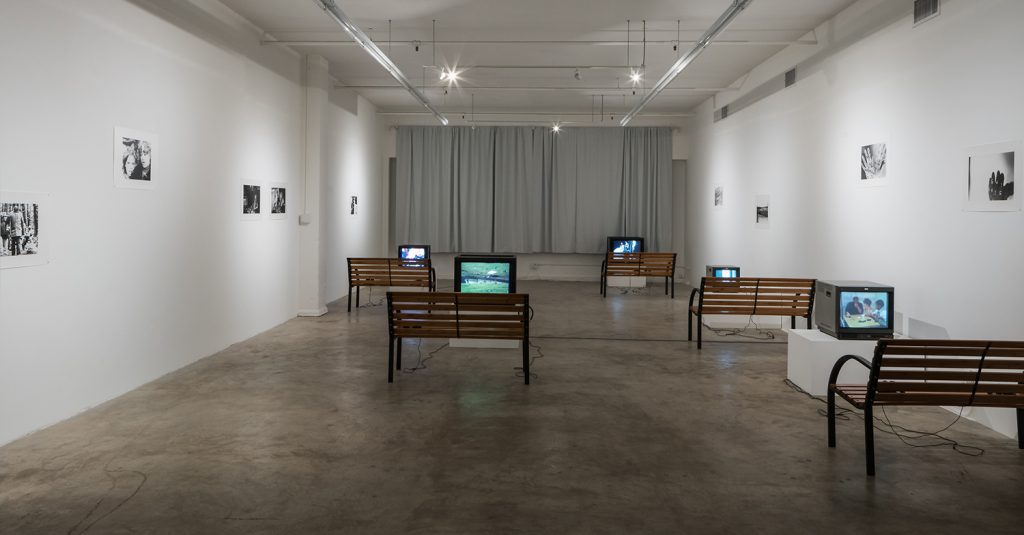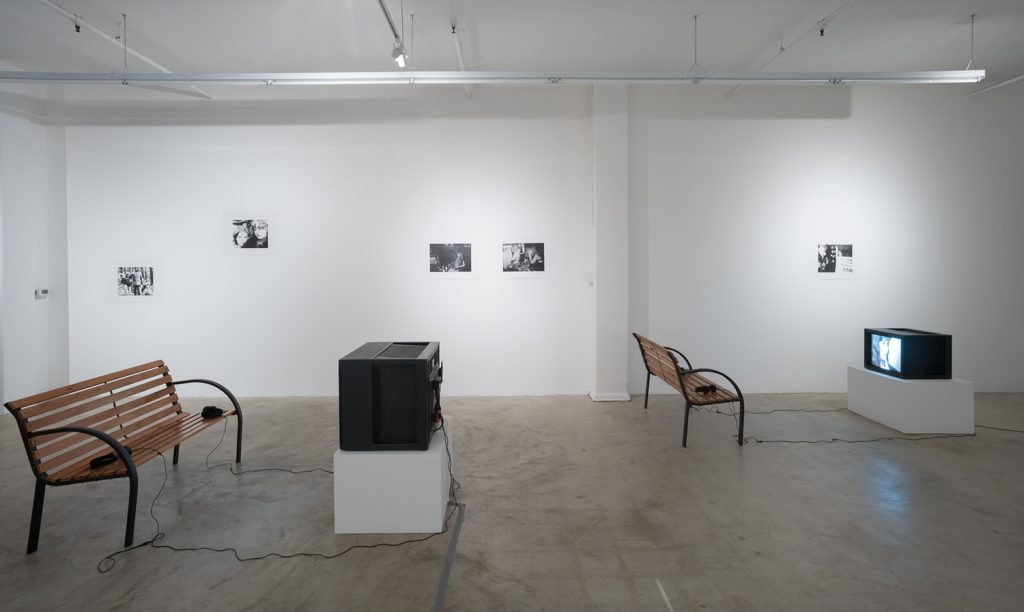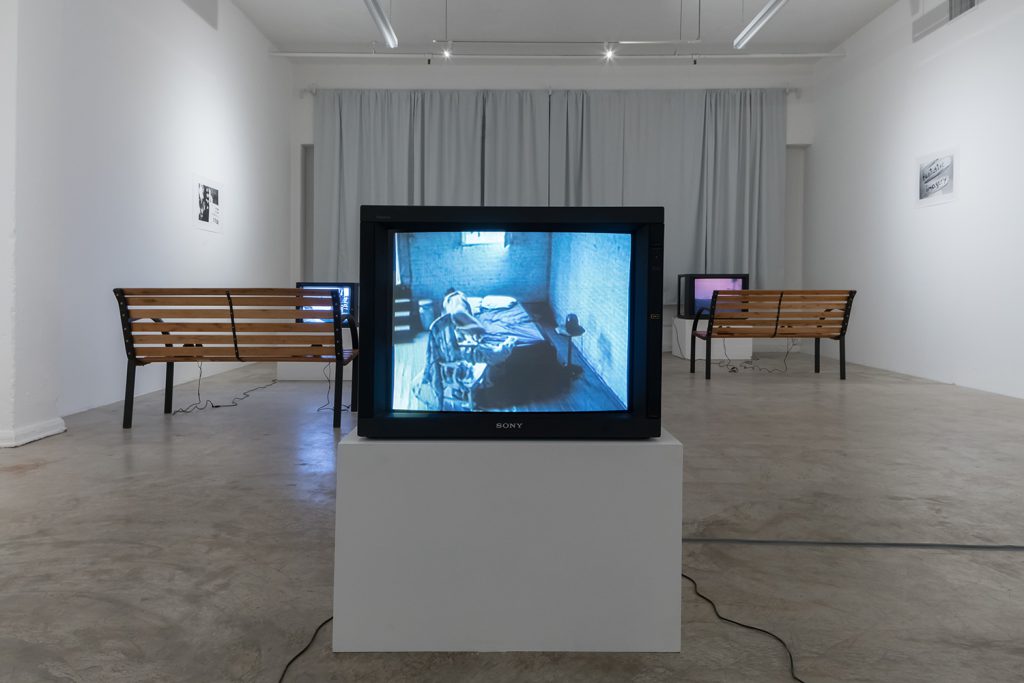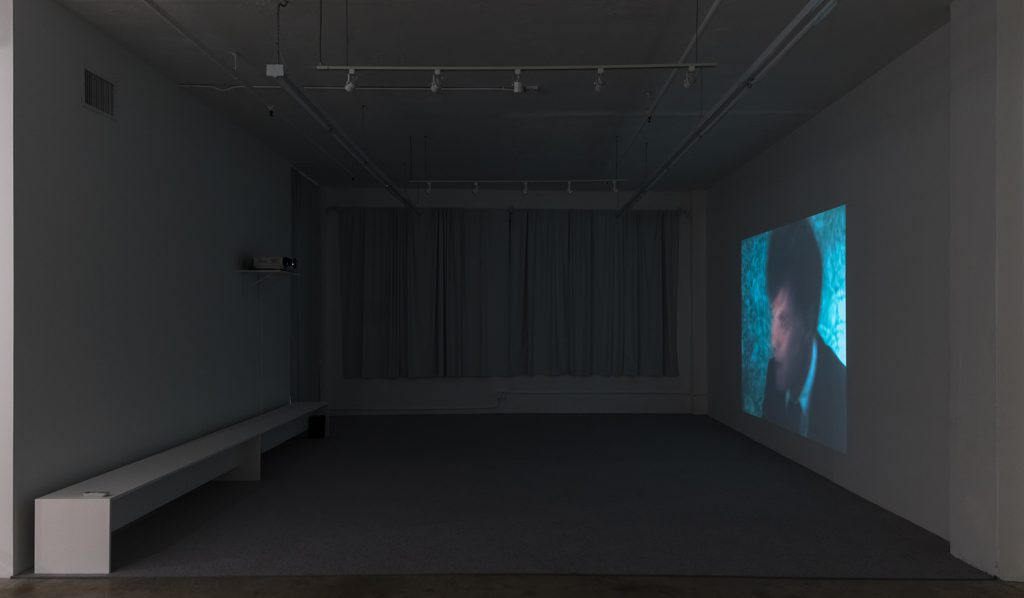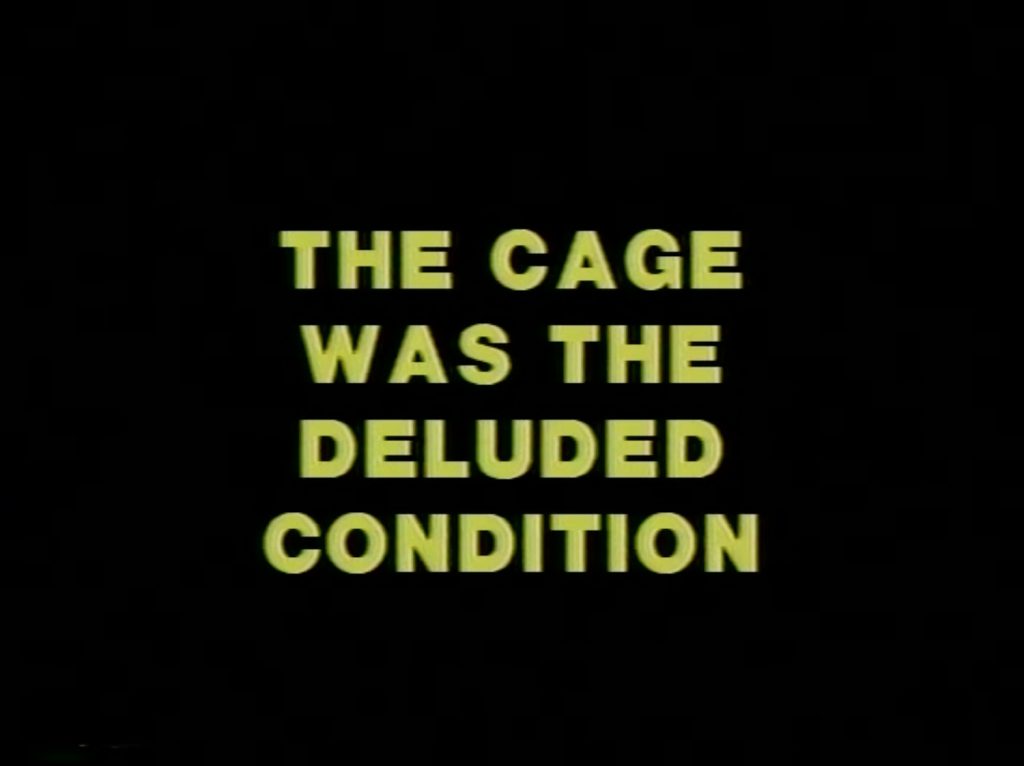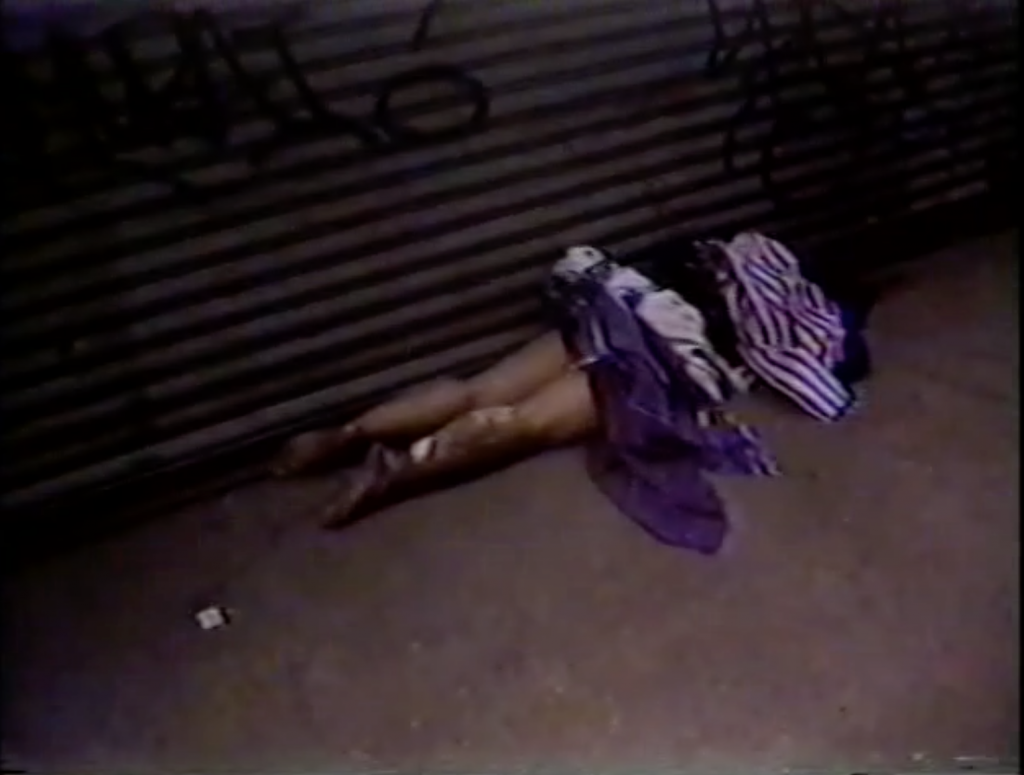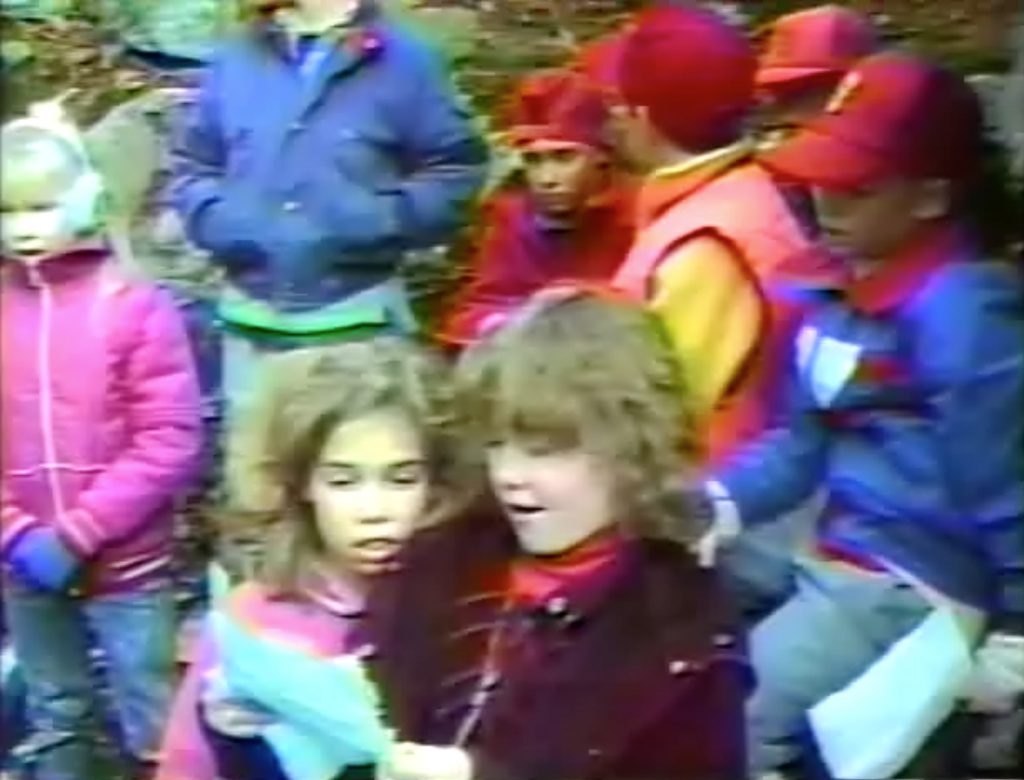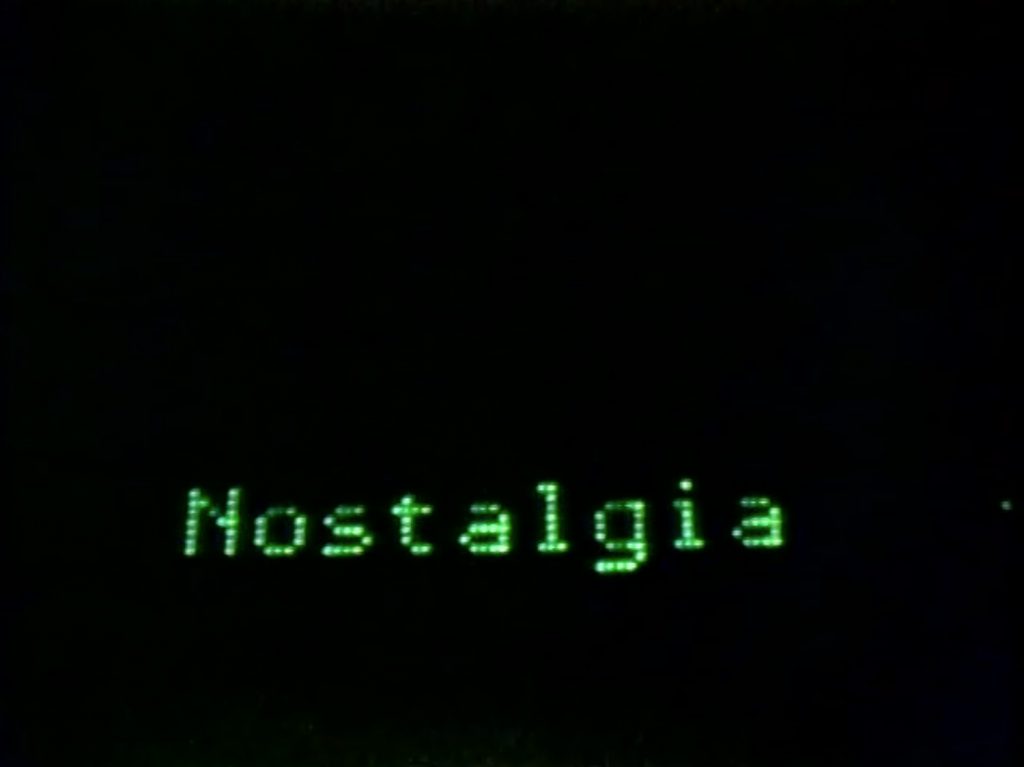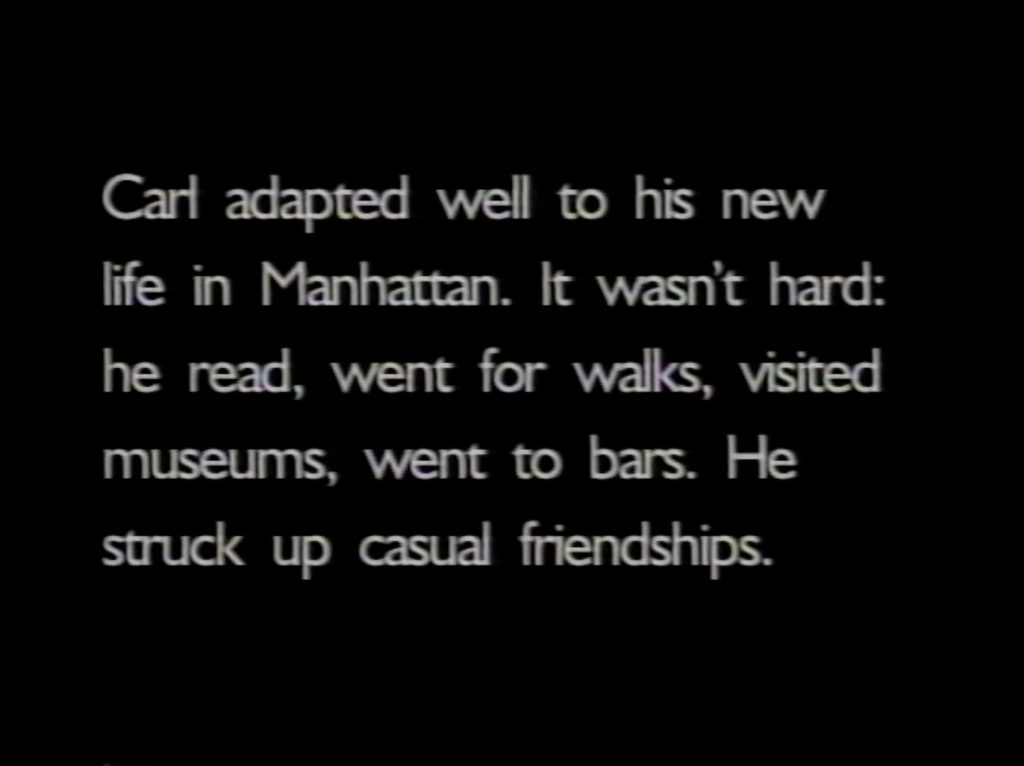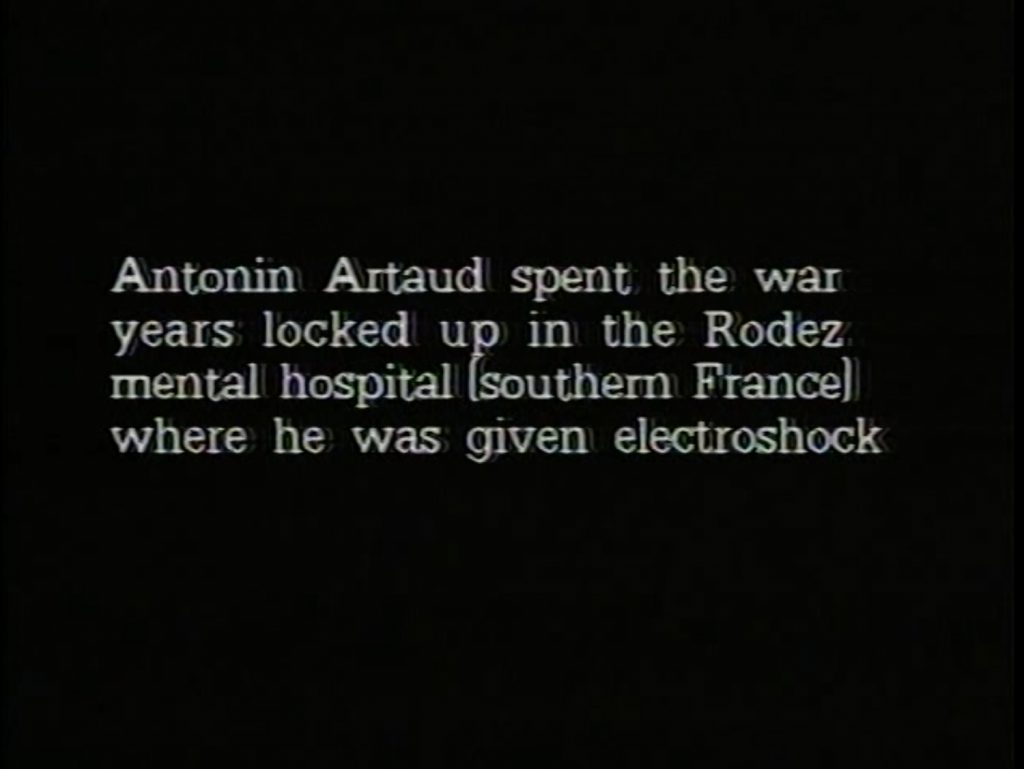 Voyage to Rodez
Voyage to Rodez1986
Co-director: Sylvère Lotringer
16mm film transferred to video
13 min 58 sec
Video still
 In Order to Pass (2)
In Order to Pass (2)2018
Digital print on 100 lb. uncoated paper
19 x 25 in / 48.3 x 63.5 cm
Edition of 5
 In Order to Pass (1)
In Order to Pass (1)2018
Digital print on 100 lb. uncoated paper
19 x 25 in / 48.3 x 63.5 cm
Edition of 5
 In Order to Pass (3)
In Order to Pass (3)2018
Digital print on 100 lb. uncoated paper
19 x 25 in / 48.3 x 63.5 cm
Edition of 5
 In Order to Pass (4)
In Order to Pass (4)2018
Digital print on 100 lb. uncoated paper
19 x 25 in / 48.3 x 63.5 cm
Edition of 5
 How to Shoot a Crime (1)
How to Shoot a Crime (1)2018
Digital print on 100 lb. uncoated paper
19 x 25 in / 48.3 x 63.5 cm
Edition of 5
 The Golden Bowl or Repression (1)
The Golden Bowl or Repression (1)2018
Digital print on 100 lb. uncoated paper
19 x 25 in / 48.3 x 63.5 cm
Edition of 5
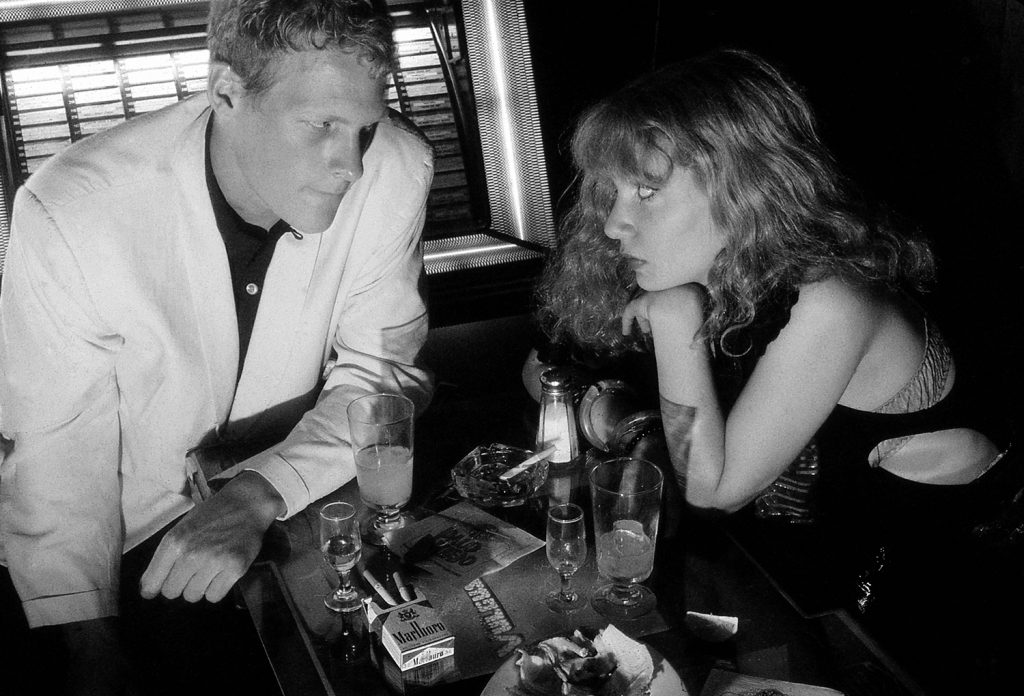 The Golden Bowl or Repression (2)
The Golden Bowl or Repression (2)2018
Digital print on 100 lb. uncoated paper
19 x 25 in / 48.3 x 63.5 cm
Edition of 5
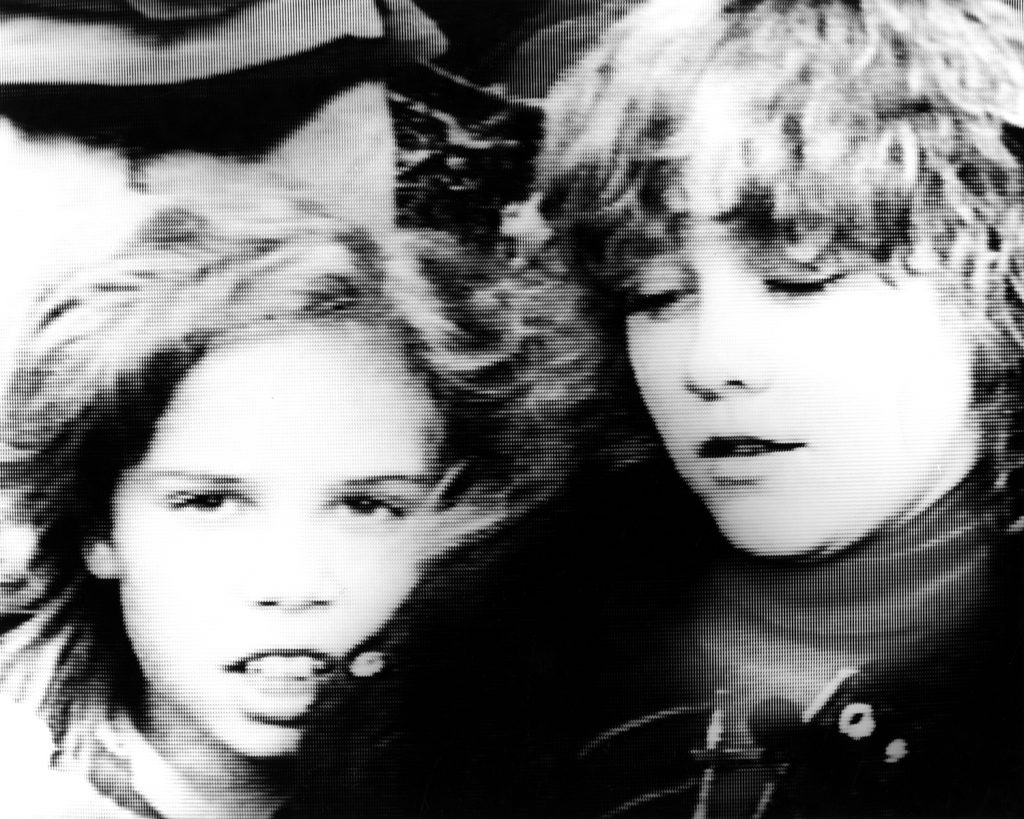 Traveling at Night (1)
Traveling at Night (1)2018
Digital print on 100 lb. uncoated paper
19 x 25 in / 48.3 x 63.5 cm
Edition of 5
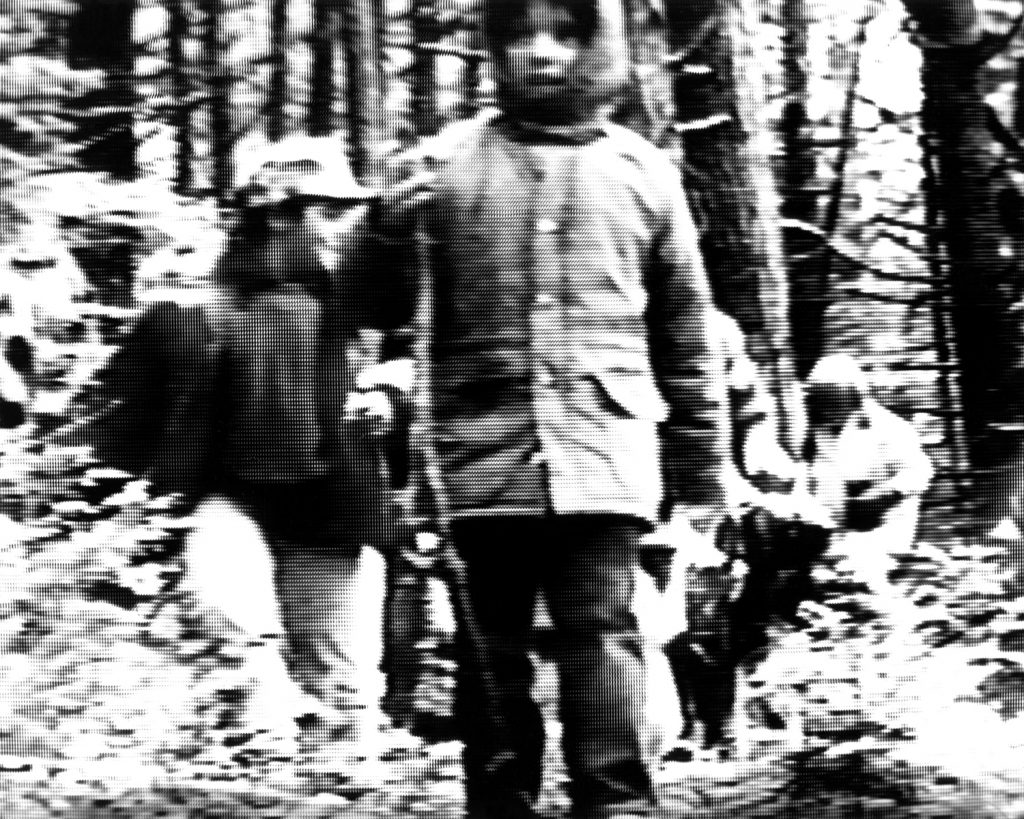 Traveling at Night (2)
Traveling at Night (2)2018
Digital print on 100 lb. uncoated paper
19 x 25 in / 48.3 x 63.5 cm
Edition of 5
CHRIS KRAUS
In Order to Pass: Films from 1982 – 1995
March 24 – June 23, 2018
Opening Reception Saturday, March 24, 6-9pm
Chris Kraus made nine films between 1982 and 1995, the entirety of her output in this medium. These works range widely in form, feeling and length. Each materializes from the meeting of desire and contingency, where the personal, political and practical contend with one another.
In the title of one of Kraus’ films, In Order to Pass, there is an instruction for how to understand her filmmaking drive. These works are characterized by a passing through, with Kraus’ subjectivity the conductor for all that runs through it, that eventually tips out into the work. They capture moments of charged transition. As Kraus reflects on the films years later: I had not yet started writing, and the desire behind them – to escape from unhappiness (i.e., a surfeit of emotion and content) into happiness (i.e., a clarity or form in which all these fragments of feeling and thought could be magically held) was still fresh.
What courses through each of these distinct films is a current of visions, refrains, genre, nostalgia, libido, sound, image and impulse. These films convey their maker’s process of sublimation and also an undoing of that same process. Kraus’ productions are necessarily experimental. Recurrently, she considers existing formats – the novel, the biography, the manifesto, the documentary, the trailer, the short and feature-length film – and retools them. The process of finding a process often becomes subject matter rendered visible in the work. Scripted dialogue and improvised exchanges share equal status. Footage might be captured on an involuntary whim, or be the consequence of assiduous planning.
In her own words, Kraus ascribes her urge to make films as: A terrible megalomania, an insistence on being present – even when one has no personal presence – through one’s double, the film… Much as I loathe the idea of a feminine ecriture, I have to admit that the impulse to do this seems very female. Barbara Rubin is a patron saint of this kind of film … 15-year-old girl given a Bolex transforms her isolate misery into Christmas on Earth.
Simone Weil, Antonin Artaud, Henry James and Chuck Berry are adapted for the screen through various methods; and a flurry of characters visit these works as subjects, actors, cameos and apparitions. Kraus also maps a community of contemporary writers, artists and performers by including them as collaborators, cast, and crew; on-screen appearances made by Sylvère Lotringer, Terence Sellers, Lee Madigan, Penny Arcade, Jim Fletcher, John Kelsey, David Rattray, Bill Raymond, Will Patton and Judy Nylon toy with boundaries between personality and character, between fiction and journalism. It is her final film and only feature, Gravity and Grace, that offers the most congealed plot and patent characters, and can now be viewed as the jump-off for Kraus’ literary ambitions.
In 2018, it’s almost implausible to consider Chris Kraus’ films without the heft of her subsequent writing bearing down on their reading. Kraus, who Holland Cotter describes as ‘one of our smartest and most original writers on contemporary art and culture,’ develops a method in her novels that invites the intellectual and critical mind of a writer to be built upon her emotional chassis.
The cohabitation of what is deemed high and cognitive, with what is deemed base and sentimental, takes full effect in her four novels and extends to the manner with which she considers artists and confronts their work in her critical writing. Yet this influential space that Kraus established – where the private and public modes of experience meddle with one another – is initiated in these nine films, each intoxicated and equipped with heady thinking and thick atmosphere. Kraus’ work is now decisively inscribed in the DNA of contemporary cultural thought and In Order to Pass (1982), Terrorists in Love (1983), Foolproof Illusion (1986), Voyage to Rodez (1986), How to Shoot a Crime (1987), The Golden Bowl or Repression (1984-88), Traveling at Night (1990), Sadness at Leaving (1992), and Gravity and Grace (1995) form the foundation of this impactful contribution.
Chris Kraus (b. 1955) is a Los Angeles–based filmmaker, writer, art critic, and editor whose novels include I Love Dick (1997), Aliens & Anorexia (2000), Torpor (2006), and Summer of Hate (2012). Kraus’ latest book is a literary biography of writer Kathy Acker: After Kathy Acker (2017). Kraus’ collections of essays on art include Video Green: Los Angeles Art and the Triumph of Nothingness (2004) and Where Art Belongs (2011). She has written countless reviews, essays, and stories for publications such as Artforum, Art in America, Modern Painters, Afterall, The New Yorker, The New York Times Literary Supplement, The Paris Review, The Los Angeles Review of Books, Bookforum, and Texte zur Kunste. Kraus taught creative writing and art writing at The European Graduate School / EGS for ten years and has been a visiting professor at the Art Center College of Design, the University of California at San Diego, New York University, the San Francisco Art Institute. Along with Sylvère Lotringer and Hedi El Kholti, Kraus is co-editor of the publishing house Semiotext(e). Kraus is the recipient of a Guggenheim Fellowship for General Non-Fiction (2016), a Warhol Foundation Arts Writing Grant (2011), and Frank Jewett Mather Award for Art Criticism from the College Art Association (2008). Her novel, I Love Dick, was recently adapted for television and released on Amazon Video.

